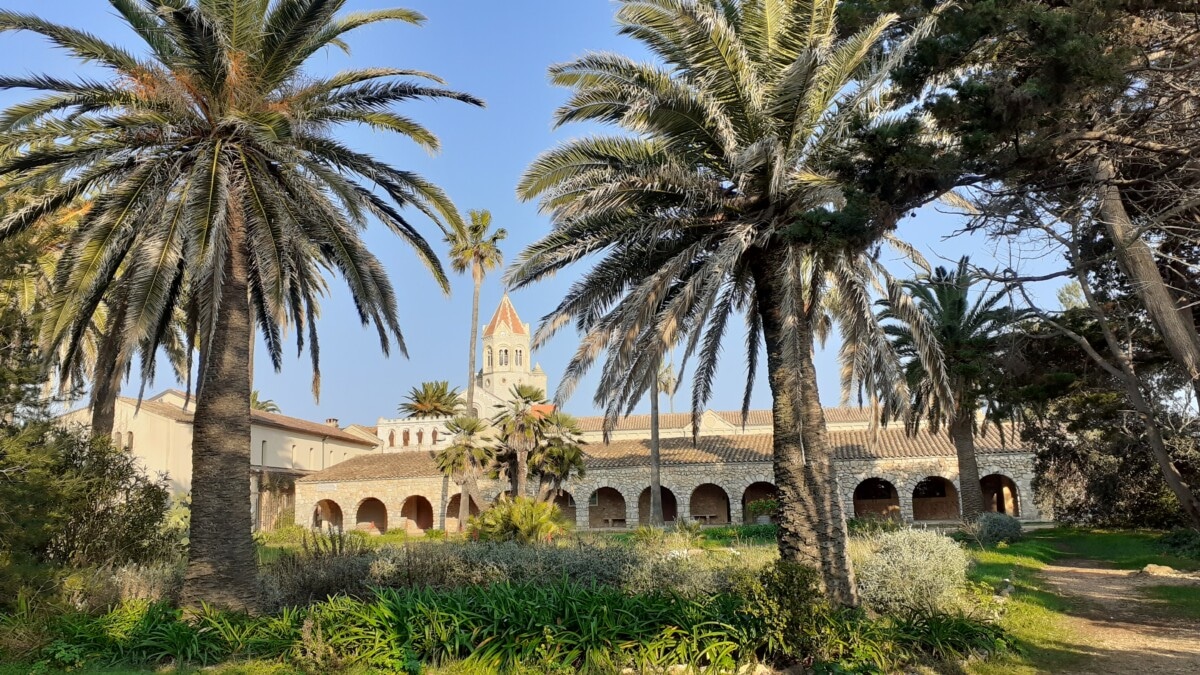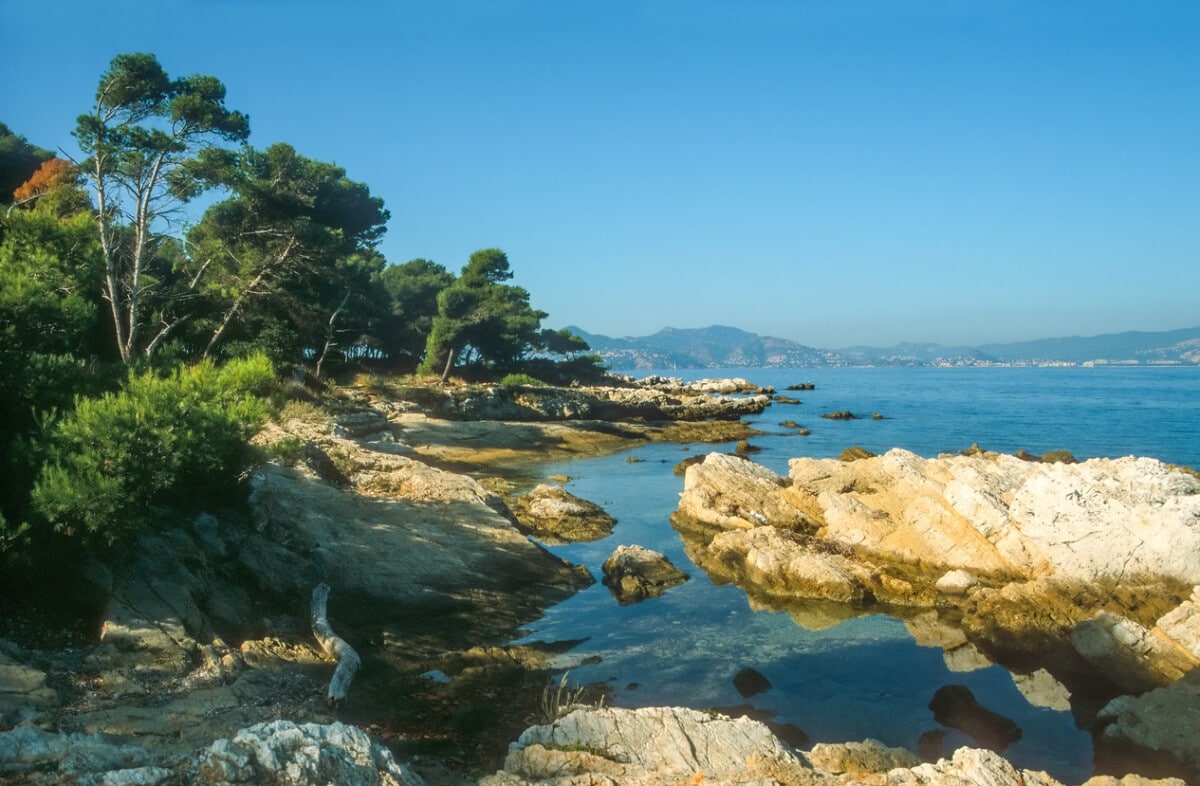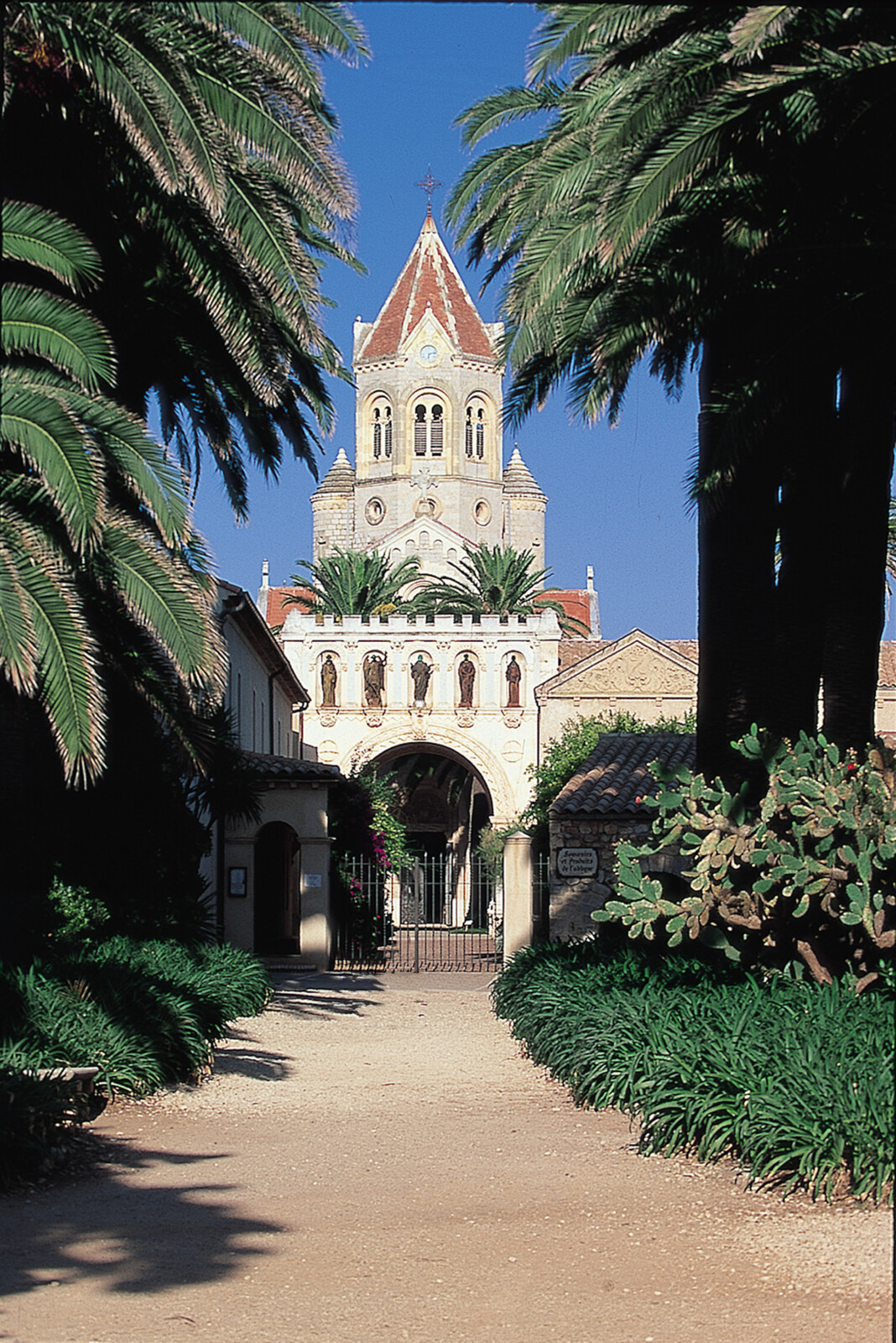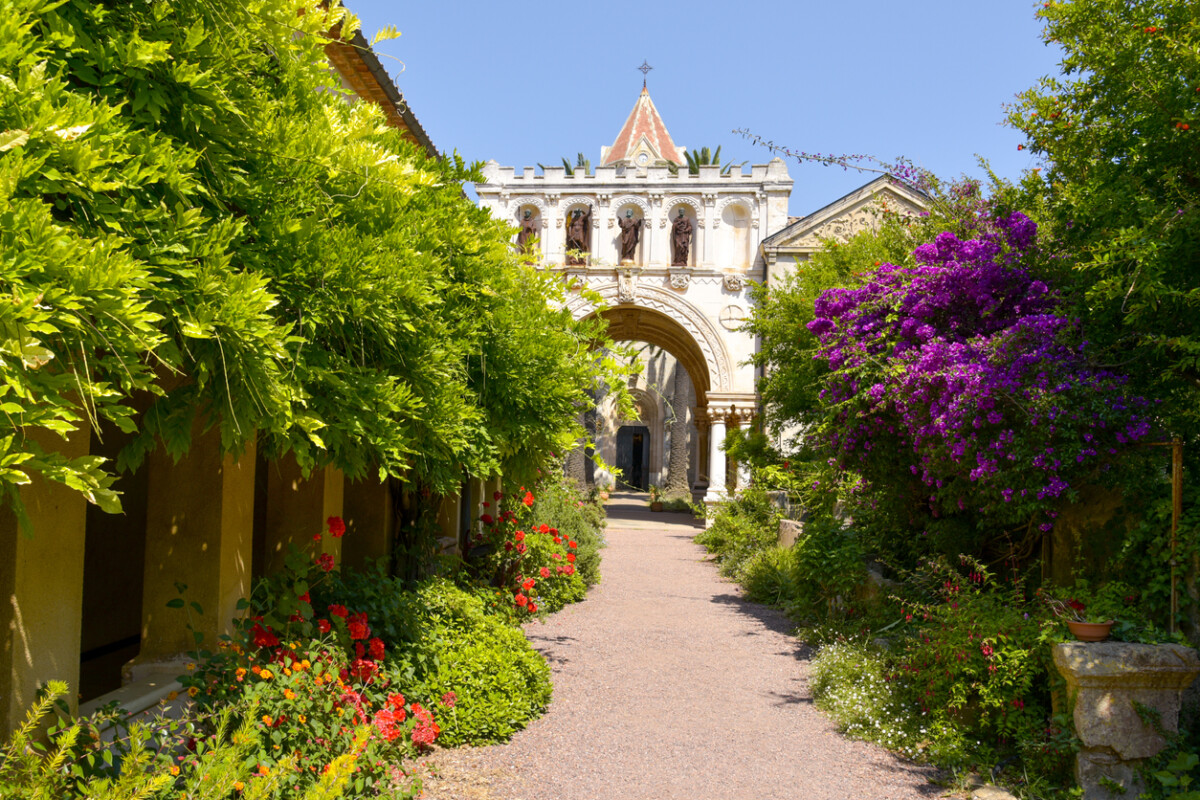My Three-day Retreat on Île St. Honorat in France
My retreat on Île St. Honorat, off the French Mediterranean coast, offered the solace I sought. I learned about silence. I experienced the real meaning of sharing and togetherness.
With a head full of sorrow, and a tired body, I dragged myself for a three-day retreat on Île St. Honorat. I was curious about this Mediterranean island, home to monks who worked the soil to make quality wine and olive oil. But, I’m not Catholic, so I wasn’t sure what to expect at St. Honorat Island. I’d never been on a retreat, and I was apprehensive, but feelings of frustration at work and the pandemic had taken their toll. I needed a change, and besides, this location promised solace.
As I prepared to leave home, my best friend asked if she should come with me. While I appreciated the offer, I knew that a couple of days on one of the four remote Lérin Islands, with no trendy cafés and restaurants, was not her idea of a three-day break. So, in March, I visited the functioning abbey during a less touristy season. It was the perfect time to enjoy the lush vegetation and untouched wilderness.
Getting to My Retreat on Île St. Honorat
St. Honorat Island is on the French Mediterranean, rich in history, beauty, and architecture, waiting to be explored. The only way to get to St. Honorat Island is by ferry. There are nine daily departures from Cannes, with a tenth early morning departure on Sundays and public holidays. A roundtrip ticket from Cannes to Honorat is 15.50 Euro (about $17).

The secluded island is an ideal retreat from daily life. Photo courtesy Île St. Honorat
The thirty-minute boat ride out to St. Honorat Island from Cannes allowed me to reflect on the turquoise Mediterranean’s beauty. In the distance, I recognized Isle Marguerite, the larger of the two Lérin Islands. Behind me was noisy, busy, famous Cannes.
I eyed my fellow passengers: some would only be visiting for the day while others, like me, I supposed, wanted to spend time with nature, time to nurture their spirituality.
If you plan to go for the day, you can explore the paths, visit the chapels, and book lunch at La Tonnelle, where you can face the Bay of Cannes, dine on Mediterranean cuisine, and have a glass or two of the monks’ fine wine. This idyllic dining spot is situated where the ferry docks and is open until 3 pm every day.
Founding of Île St. Honorat
Saint Honoratus founded the island in 410, and it is named for the saint. Today, St. Honorat Island belongs to a community of 21 monks aged 37 to 90. They live there respecting the rule of Saint Benedict based on prayer and work. Perhaps, if Saint Honoratus found peace and tranquillity on the island, I could as well.

Monastery on Île St. Honorat. Photo courtesy Île St. Honorat
The majestic ancient tower out on the open Mediterranean is one of the principal features of the island: not to be missed as the ferry boat approaches the island. Constructed on the southern shore, the fortress was developed in three stages and was the central part of monastic life for centuries.
Restoration is nearing completion on this unique mystical site that defended the monastic community for centuries.

Fortress tower on the Île St. Honorat, Cote Azur, France. Photo by cmfotoworks via iStock by Getty Images
History of Île St. Honorat
Although St. Honorat Island began as a peaceful place, there have been attacks numerous times over the centuries.
During one attack in 1635, the Spanish expelled all of the monks from the island. The French recovered the island two years later, and the monks returned.

Île St. Honorat has a rich history. Photo by cmfotoworks via iStock by Getty Images
Turmoil continued throughout the French Revolution and Napoleonic Wars from 1792 to 1815. You can see grim reminders of this more violent history of Île St. Honorat as you explore. For example, you can see two ovens that heated cannonballs during the Napoleonic wars—all grim reminders of not-so-pleasant events.
Prices pulled from the Amazon Product Advertising API on:
Product prices and availability are accurate as of the date/time indicated and are subject to change. Any price and availability information displayed on [relevant Amazon Site(s), as applicable] at the time of purchase will apply to the purchase of this product.
After the French revolution, Honorat belonged to France for a while before being sold to a French actress who lived there for about two decades.
In 1859, the island saw a rebirth when the Bishop of Fréjus bought it, and a community of Cistercian monks began rebuilding in earnest.
Finding Solace During My Retreat on Île St. Honorat
The island is small. It measures only a quarter of a mile wide (about a half kilometer) and less than one mile (about 1.5 kilometers) long. Leisurely solitary walks each day allowed me to appreciate the beauty of the rocky beaches, the pine forests, the paths, the trees, and the plants. I preferred early morning and late evening walks, especially when the last ferry boat disappeared into the horizon. Walking around this no-car island is a luxury, even more breath-taking in the evening light.
Respecting nature is critical on the island. Daily visitors must take any trash with them home when they leave at the end of the day.

Coastline on Île St. Honorat. Photo by cmfotoworks via iStock by Getty Images
Vineyards on Île St. Honorat
Producing quality wine is one of the principal activities of these hard-working monks. They plant, grow, and harvest eight different red and white wine grapes.

Vineyards on Île St. Honorat. Photo courtesy Île St. Honorat
Location matters enormously in wine production. In mainland France, viticulturists face hail, frost, and cold temperatures each year. Not on Île St. Honorat.
Brother Marie, cellar master, explained that with 220 days of sunshine, the approximate 20 acres (8 hectares) of vines have the best possible weather conditions. ”The climate here is very mild; we have minimal frost. At Honorat, we harvest manually and use a tractor to work the soil,” he explained.

Monks gather grapes from the vineyards and make wine. Photo courtesy Île St. Honorat
The monks also manufacture and bottle their organic wine on the island, shipping it to countries as far away as Japan.
Grapes aren’t the only agricultural endeavor on the island. There are about 150 olive trees, some dating back more than 1,000 years. Brother Marie also explained that permaculture agriculture for growing vegetables on the island is the latest venture.
Church Services During the Retreat on Île St. Honorat
Since the island is home to monks, the church and chapels play a significant role in the retreat. To participate with the monks at the different services was a bonus for us retreatants. I found the after-dinner service incredibly moving—dim lights while listening to the monks chanting is a treasured memory.
There are seven chapels at various locations on the island. Some are on the coastline, while others are slightly inland. The oldest chapel, St. Sauveur, recently underwent renovations.
The central fixture of St. Honorat Island is the church—Abbaye de Lérins. While some might find the abbey to be too basic, perhaps too sparse, it is in keeping with the Cistercian tradition. For me, it was splendid. Mass is at 11:25 am daily and on Sundays at 9:50 am.

Entry of Abbaye de Lérins, the main church on Île St. Honorat. Photo courtesy Île St. Honorat
Daily Life During My Retreat on Île St. Honorat
Silence at mealtimes was not at all troublesome. My fellow diners and I did not need to engage in conversation. The sense of togetherness was always there: sharing and being grateful with prayers before and after eating. I was able to practice mindfulness, the art of concentration on the present moment in time.

Daily life is tranquil during a retreat on Île St. Honorat. Photo by nito100 via iStock by Getty Images
Evelyne, a volunteer who greets retreatants at reception, was right when she said that a retreat is like plunging into the unknown. A volunteer for more than nine years at Honorat, she loves being a part of the community.
“I meet people I will not meet without volunteering at the abbey. I realized that there is as much life as there are people. It is enriching.”
At the end of each meal, we moved around each other in the kitchen with purpose and with efficiency; some of us did the dishes—manually, of course—while others dried or laid the tables for the next meal.
What surprised me was with my phone and computer parked in my case, I wasn’t dying to chase up emails and check out what my followers on Twitter had to moan about. Instead, I had time to spend on the simple things, the less stressful things. My head was a lot clearer. I was in a safe place.
Articles Related to a Retreat on Île St. Honorat
Returning Home After My Retreat on Île St. Honorat
Three days later, feeling on top of the world as light as a feather, I skipped on board the vessel that would take me back to the mainland. I returned to the noisy, chaotic world, but I’d learned about silence; I’d experienced the real meaning of sharing and togetherness. My retreat on Île St. Honorat offered the solace I sought. I was ready to face the world. To book your spiritual retreat, visit online or contact them directly at [email protected].
We recommend booking well in advance. Be sure to explore Wander for more places to see when visiting France. We also have more suggestions for wellness travel.

.





